B&W 804 D4 Review
B&W is likely the world’s most venerated loudspeaker manufacturer, because it’s pushed the boundaries of performance, sound quality and aesthetics ever since it was established in Britain in 1966 by John Bowers and Roy Wilkins.
Reviewer: Angus Bradley
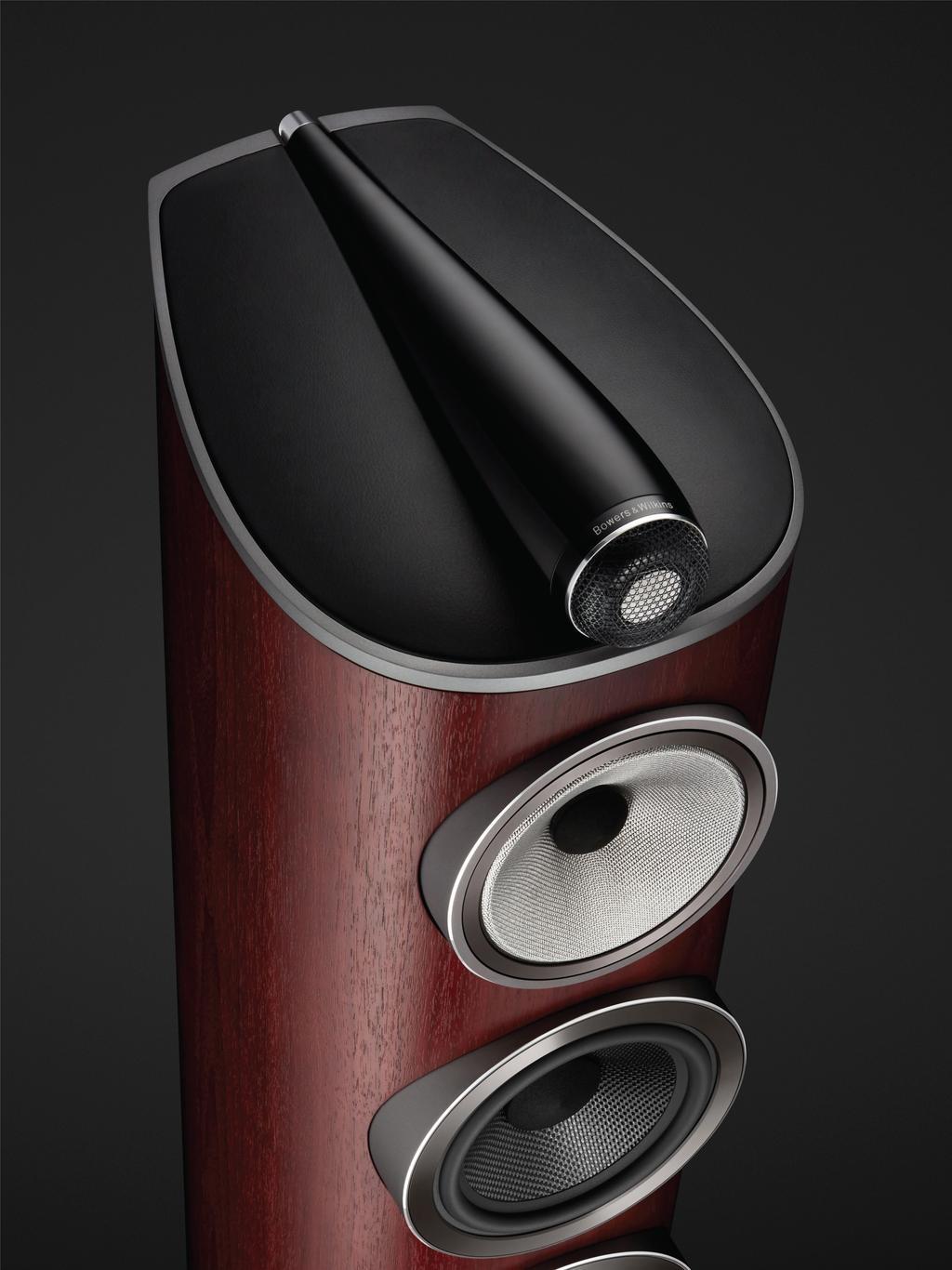
During the more than half-century it’s been building loudspeakers, B&W has produced some decidedly weird-looking designs (look up B&W’s Nautilus speakers on Google!) and even the company’s more conventional 800 Series Diamond flagship designs are too ‘out there’ (or maybe just too large) to suit many buyers.
This B&W 804 D4 is the company’s entrylevel floor-standing loudspeaker in the 800 Series Diamond and includes all the technology developed for this series but presents them in a more traditional enclosure design and size.
OUT OF THE BOX
Although B&W says that its 804 D4 is more conventional in appearance than the other floorstanders in the 800 Series Diamond range, it’s still a totally dramatic and distinctive enclosure, not least because it stands an impressive 1.07 metres high on its standard rubber-booted steel peg feet, and even higher on its chromed spiked feet. Our review pair looked absolutely superb in the new Walnut finish created specifically for this new 800 Diamond series, but they look equally good in the B&W’s other three finishes.
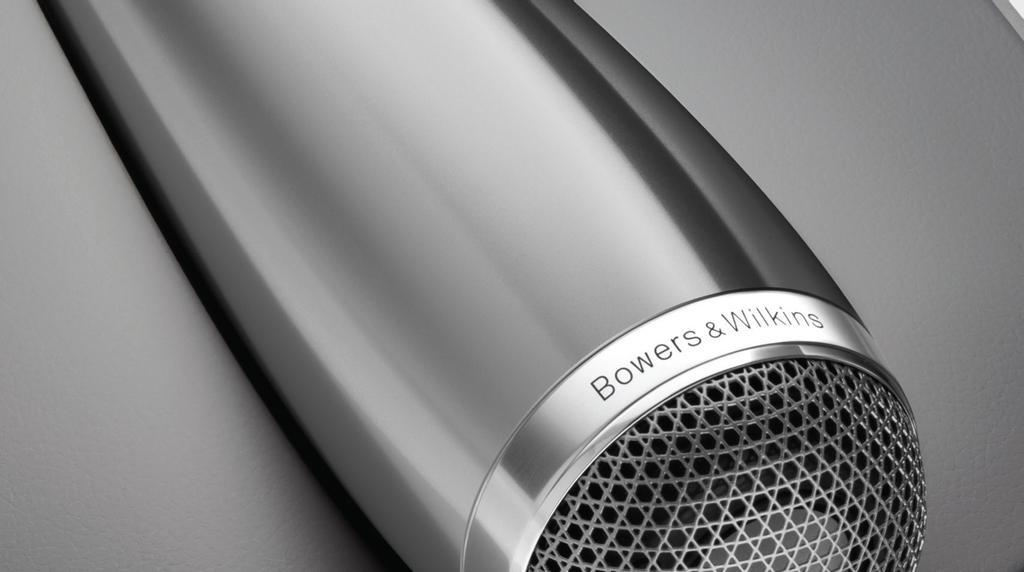
FIRST IMPRESSIONS
Initially we thought that the curved textured black top surface of the 804 D4 was some type of faux leather, but it turned out that it was the real thing, and not just any old leather either, but ‘Leather by Connolly’. The Connolly Leather company, founded in 1878, is one of Great Britain’s most famous and most prestigious tanners. Connolly supplies the leather for cars bearing the badges of Aston Martin, Rolls-Royce, Bentley, Jaguar, Ferrari, and Maserati plus it was also used to outfit the QE2 and the benches in the British Houses of Parliament. The soft, sweet-smelling leather covers an all-new aluminium top plate.
We were very surprised to find that the tweeter was far more compliantly attached than any of B&W’s previous ‘tweeter on top’ designs, so much so that it felt decidedly ‘wobbly’ to the touch, but we’ll get to this later on in this review.
BASS DRIVER DESIGN
As you can see from the photographs accompanying this review, the 804 D4 has two bass drivers. Rated by B&W with a diameter of 165mm, we could not confirm this because of the way the drivers are mounted in the baffle, which is unusual due to the extreme curvature of the 804 D4’s cabinet. What B&W has done is install each of the drivers in its own metal tube, and these tubes are then fixed through the baffle in such a way that they protrude from it by 30mm at the 9 o’clock and 3 o’clock positions (which are the furthest from the cabinet itself) and by 5mm at the 12 o’clock and 6 o’clock positions (the closest). The overall diameter of each of these tubes is 170mm.
The cones are made from B&W’s trademarked ‘Aerofoil’ material, though in this case the word aerofoil refers to the profile of the cone, because unlike a standard cone, which is uniformly thick across its diameter, B&W’s cone is not constant over the cone’s diameter, but varies depending on the distance from the point at which it attaches to the voice coil former. Viewed as a cross-section, the shape that’s formed is similar to that of an aeroplane wing.
B&W achieves this aerofoil shape by sandwiching a thin layer of hard foam between two skins of woven carbon-fibre, which forms a laminate that is much stronger and more rigid than any of the materials on their own, while at the same time lighter in weight than a cone of the same rigidity made from a single material (such as aluminium, paper … or polypropylene).

“The midrange driver is a completely new design for B&W—indeed it’s a design that’s completely new to the world of loudspeakers
MIDRANGE DRIVER DESIGN
As indicated in the introduction to this review, the B&W 804 D4’s midrange driver is a completely new design for B&W — indeed it’s a design that’s completely new to the world of loudspeakers because it doesn’t have a spider. Or rather, its spider is more spider-like than any previous spider ever built. As for what a spider is, and what it does…
Dynamic cone loudspeakers usually have two suspension systems that act in concert to make sure that the voice-coil stays centred in the magnetic gap, that the cone rapidly returns to its central rest position in the absence of an audio signal, and that the voice coil stays within the magnetic field.
One of these suspensions is almost always in clear view — it’s the flexible cloth, rubber or foam surround that runs around the circumference of the cone (‘d’ on the diagram opposite). The other suspension is hidden under the cone, and is usually located in the vicinity of the top of the voice coil former (‘c’ on the diagram). It’s this suspension that’s called a ‘spider’.
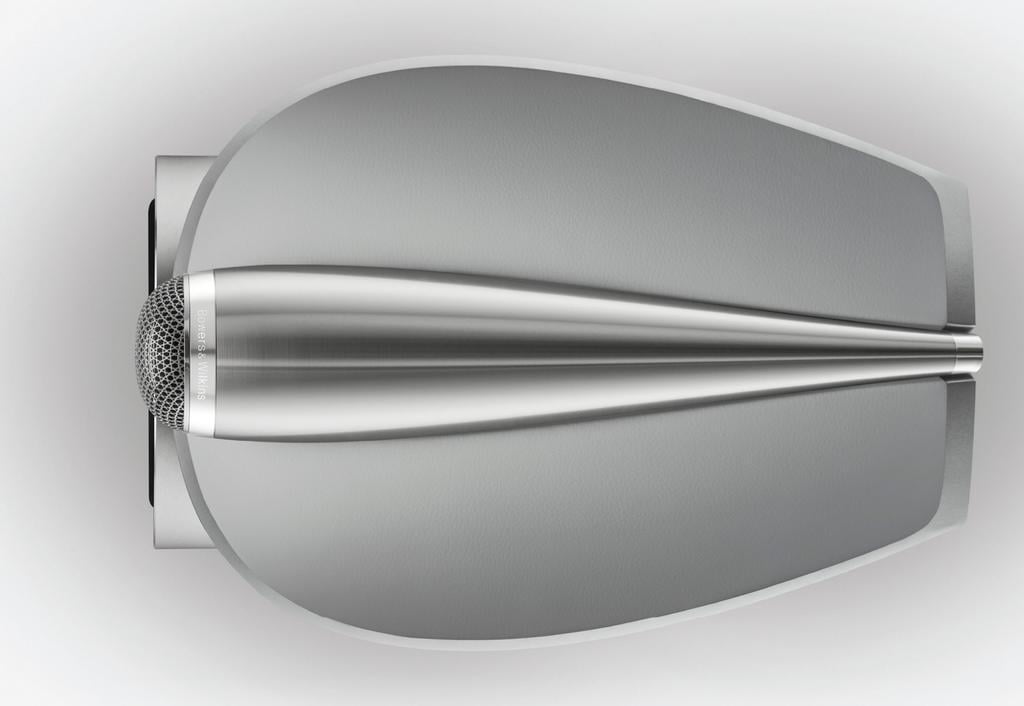
In the past, spiders have almost always been a complete circle of pleated cloth, as in the photograph. Although this type of spider performs its multiple functions very well, it introduces a significant problem, and this is that it acts as a secondary diaphragm, because it produces sound waves from both its front and back surfaces, which interfere with the sound waves being produced by the cone. What’s more, this interference is severe, because the pleats in the surface mean that it’s not working pistonically and therefore is producing unwanted frequencies that are unrelated to the frequency being produced by the cone.
B&W’s new ‘Biomimetic’ spider is the solution to the problems outlined. You can see from the photograph that it’s just an inner ring (which attaches to the voice coil former) and an outer ring (which attaches to the driver chassis) with six tendril-like ‘legs’ to connect the two. The design is such that it performs all the functions required of a spider, but does not create its own sound, because it doesn’t have an appreciable surface area — indeed hardly a surface at all.
You might be wondering why only the midrange drivers in the 800 D4 Series are fitted with this new and revolutionary biomimetic spider. The reason is that it only works well on drivers with a limited range of cone travel (the technical term for which is Xmax) and also only on drivers with relatively modest cone diameter. The Xmax and cone diameter requirements for bass drivers are too great to permit the use of a biomimetic spider.
The midrange driver on the 804 D4 is not only unique due to its biomimetic spider, it’s also unique due to its other suspension — the one around the circumference of the cone. Most midrange drivers have a half-circle of rubber (or foam, or cloth) that allows the cone to move back and forth. Indeed this is the suspension system used on the bass drivers in this the 804 D4 (and shown in the diagram opposite as ‘d’).
The midrange driver on the 804 D4, however, does not have this type of suspension. Instead the cone is connected to a flat and narrow polymer ring that stretches and contracts to accommodate the cone’s movement. B&W says this type of suspension improves the cone’s transient response and, because the ring does not reflect energy backwards into the cone surface in the same manner as a roll surround, dynamic distortion is reduced as a result. The company refers to this as a ‘Fixed Suspension Transducer’ midrange driver, or FST. In the same manner as the biomimetic spider, a fixed suspension of this type can only be used on drivers with a restricted Xmax.
This isn’t the only way the cone is isolated from the cabinet however. The entire FST driver is also isolated from the cabinet and, in the 804 D4 it’s done differently, as we discovered from B&W’s Andy Kerr. “The post-2015 front decoupling mechanisms we use now are more compliant (and have other advantages) relative to the rear-mounted ‘drawbar’ type decoupling we used in pre-2015 800 Series Diamond products,” he said. “Compared to a D3-era 804, the 804 D4 benefits from a revised front decoupling mechanism that is in itself an evolution of the design we introduced in 2017 for 700 Series. As a result, the decoupling frequency has dropped from 80Hz to 43Hz.”
“The new decoupling mechanism itself is a key part of that: in addition, we also benefit from the use of Shore 30 silicone decoupling mounts for the chassis (four at the bottom, two at the top).”
Yet another unique feature of the 804 D4’s FST midrange driver is the material from which the spangly silvery cone is made. Unfortunately, we can’t tell you much about it because B&W keeps it a trade secret. All we can tell you is that it’s a woven composite fabric B&W calls ‘Continuum’. In its usual manner, B&W has gained trademarks for both the initials ‘FST’ and the word ‘Continuum’.
TWEETER DESIGN
If you’re reading this review, you likely know already, but if not, you read it here first! The ‘D’ in B&W’s 800 D Series stands for diamond. In this case, not a girl’s best friend, but an audiophile’s ‘to-die-for’ material from which to fashion a tweeter dome.
Rather counter-intuitively, diamond being the hardest mineral known to mankind — the diamond dome is actually quite fragile, so to prevent it being accidentally damaged, B&W protects it with a grille mesh that very slightly affects its frequency response and reduces its efficiency. B&W has been continually improving this grille to make it ever-more acoustically transparent, in order that it has the least effect on the sound waves that pass through it. The current incarnation of the grille has a mesh grid that looks a little like one of Buckminster Fuller’s geodesic domes, with myriad interlinked triangles. This protective grille is removable, but to ensure that you really, really, want to remove it, a special tool is required in order to do so.
Diamond is heavier than either fabric or metal, which means it’s more difficult to drive, and somewhat less efficient as a result. B&W gets around this issue by using four magnets, rather than just one, to drive the dome. To keep all these magnets cool — so they maintain their efficiency — the tube in which the tweeter is housed (about which more in a moment) is made from aluminium alloy, so the whole surface acts as a heatsink as well as an enclosure.
Given the weight and drive issues, one might ask the reason why B&W uses diamond domes at all. That reason is that diamond has a hardness factor of 10 on the Mohs scale, which means that whereas most other tweeters enter their ‘break-up’ mode well below 50kHz (and some do so below 20kHz, so actually within the audio band itself!) B&W’s diamond tweeter does not enter its ‘break-up’ mode until a frequency of nearly 70kHz. The result is that the dome is completely rigid, exhibiting perfect piston-like behaviour not only within the audio band, but also for at least an octave above it, and delivers superior sound quality as a direct result. (By way of comparison, aluminium rates only a ‘3’ on the Mohs scale, and beryllium is only a ‘5.5’.)

There is one other problem with using a hard dome in a tweeter, and that is the problem of getting rid of pressure waves from the back of dome. Whereas the pressure waves at the front of the dome that are caused by the dome’s forward and backwards movement are what we perceive as sound, the corresponding waves issuing from the back of the dome interfere with sound quality. Some manufacturers don’t address this issue at all, while some others use a damper or disperser immediately behind the dome.
B&W uses a rather elegant acoustic construction that extracts unwanted energy from the rear of the diaphragm by moving it away to be dissipated inaudibly as it moves down the tube, with the different frequencies being absorbed at different distances down the tube (which requires a fairly long tube).
This gradual absorption technique is what B&W refers to as its ‘Nautilus’ technology. As you can see from the 804 D4, the tweeter is mounted in its own ‘Nautilus’ enclosure at the top of the cabinet. This enclosure is vibrationally isolated from the cabinet that contains the midrange driver and the two bass drivers, so that cabinet vibration cannot adversely affect the motion of the tweeter’s dome.
As noted previously, B&W has reworked the way it isolates the Nautilus enclosure from the cabinet, so the isolation is greater than it’s ever been before, to the point where the enclosure is so disconcertingly wobbly that we wondered if perhaps they’d forgotten to tighten a few screws on our review samples! It seems that we were not the first to have wondered about this ‘wobbliness’ because B&W has included the following information about the flexibility of the assembly its Owners’ Manual: “The tweeter assembly on this 800 Series Diamond loudspeaker is a decoupled component that is mechanically isolated from the main part of the cabinet.
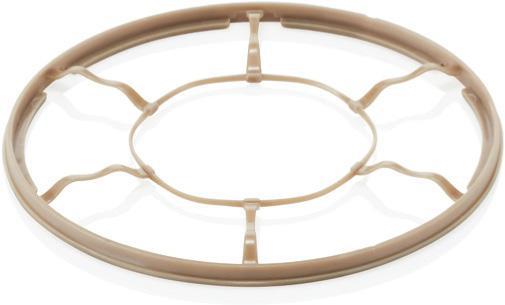
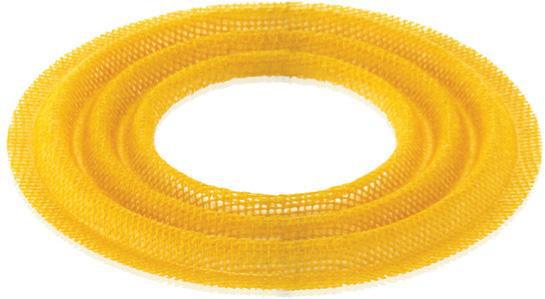
“As such, it may appear to be loose when the product is first removed from its packaging. This is not a fault: it is an inherent feature of the design and ensures optimum performance from your speaker. If the tweeter assembly has moved slightly during transit and requires adjustment, the assembly can be moved very slightly forwards and backwards to ensure that the rear of the tweeter body is aligned with the rear of the speaker cabinet.”
TERMINAL PLATE DESIGN
Down the bottom of the fluted metal ‘spine’ that forms the rear of the speaker, and to which the new ‘Reverse-Wrap’ cabinet is firmly fixed, is a row of four smooth-surfaced brightly chromed speaker terminals for making connections to (left to right) LF(–), LF (+), HF (+) and HF (–). It appears that B&W is assuming that most purchasers of the 804 D4 will bi-wire their speakers by running wires to each of these terminals from their amplifier(s), because it has not provided the usual solid buss-bars to link the negatives and positives together for customers who do not bi-wire.

Though it does not provide buss-bars, B&W has provided the necessary links in the form of a pair of fairly ordinary connecting wires fitted with gold-plated spade connectors, a pair of red ones (for the + links) and a pair of black ones (for the – links). We found it rather odd that all four interlinks are the same length, because the black ones needs to go twice as far as the red ones. If it were up to us, we’d have supplied a busbar to bridge the two (+) terminals, and a rather heavier cable to bridge the (–) terminals.
All four terminals have holes in their ends to accommodate banana plugs, but the threaded terminal posts do not have holes drilled through them to accommodate either pin connections or bare wire. This means that if your speaker cables are not terminated in banana plugs, you will likely need to do so, or instead terminate them with spades or ring connectors, depending on the diameter of the wire you’re using, because otherwise the ‘grip’ of the knob on bare wire could be a bit tenuous.
FLOWPORT DESIGN
As with all B&W’s bass reflex speakers, the 804 D4 has a specially dimpled port to maximise air-flow and minimise port noise, a design B&W has trademarked under the name ‘Flowport’.
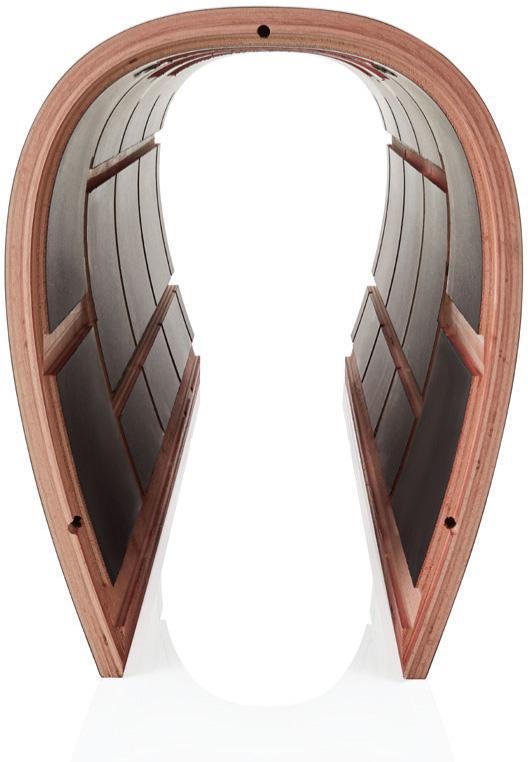
In the 804 D4 the Flowport’s exit point is invisible because it’s downwards-firing and exits to the aluminium plinth at the base. Or, to be precise, the plinth is solid alloy with a constrained layer damping sheet made from steel, the combination of which controls unwanted resonances.
The advantage of the down-firing port is that you get much better room loading which in turn enables you to be much more creative about where the speakers are positioned in your listening room. The advantage of having an integrated plinth is that the ‘slot’ around the bottom of the cabinet between the cabinet and the plinth remains exactly as the designers intended, since it cannot be compromised by the surface on which the speakers are standing.
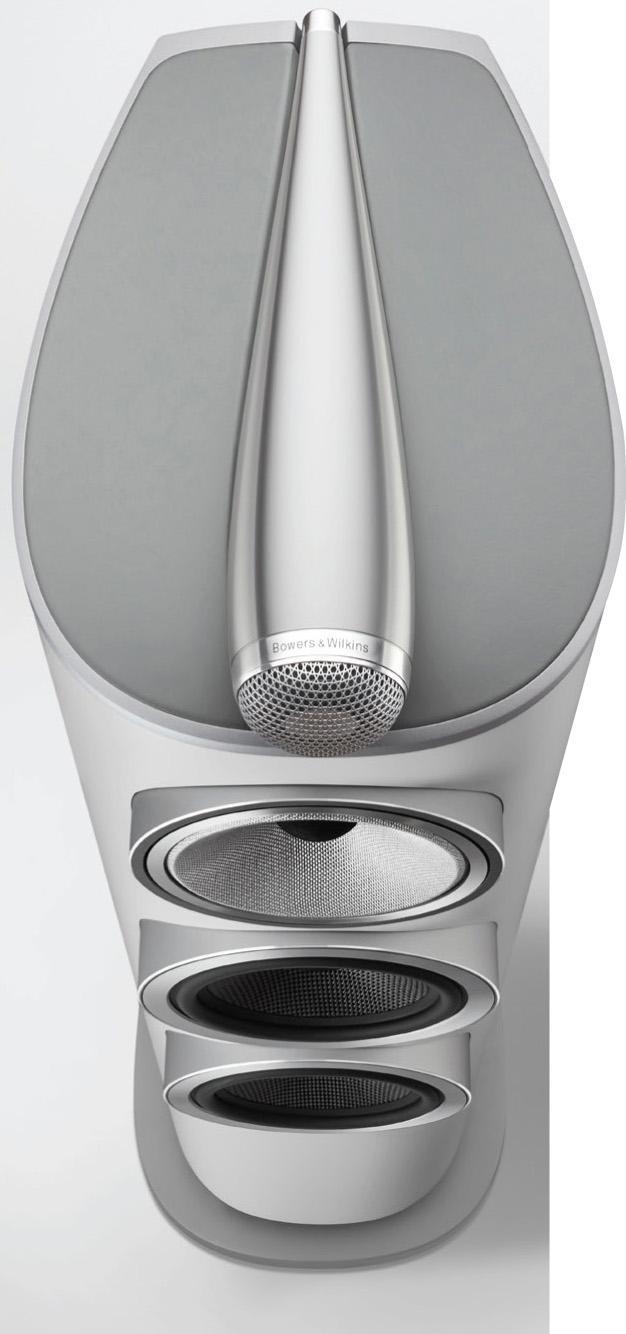
LISTENING SESSIONS
Manoeuvring the 804 D4s to their ideal spots in your listening room will be a task requiring at least two people because these speakers are really heavy (36.9kg each!) and there’s really nowhere to grip on the cabinets. Even with two people we had to tip each speaker over, with one of us grabbing the metal plinth at the bottom, and the other carrying the speaker at its top every time we moved them from one room to the other, and even within the same room. Which would be a good time to mention that the height of the cabinets and the relatively small footprint of the plinth at the bottom means they’re fairly easy to knock over — not so much forwards or backwards, but definitely sideways, where pushing them more than a dozen or so degrees away from the vertical is enough to cause them to overbalance.
Once positioned, it was time for the listening sessions, but before we go into more detail about these, it’s very important to recognise that the importance of the B&W 804 D4 being a true three-way loudspeaker design, which is one where the all-important midrange frequencies — the very audio frequencies that are the most critical to get right to ensure proper tonal recognition by the human ear — are delivered by just a single driver.
Midrange frequencies are more important than either bass or high frequencies because it’s the region where human speech takes place and the ear has to be extraordinarily sensitive in order to detect the differences between consonants, vowels, inflexions and much more.
In all two-way designs, these important midrange frequencies are always delivered by a bass driver, which means that it’s unable to devote its entire operational capabilities to midrange frequencies because it is at the same time being asked to deliver the deepest (and other) bass frequencies. The end result is that the midrange frequencies in a two-way design end up suffering from a problem known as Phase Modulation Distortion, which is what happens when a single speaker cone is called upon to reproduce low and high frequencies simultaneously.
What happens with PMD is this: If a driver is required to produce a single low-frequency sound (at, let us say 55Hz), its cone will move backwards and forwards fifty-five times per second and your ear hears the resulting movement of air the musical note ‘A1’. This pitch is an octave above the lowest A on a piano keyboard and also the one to which the second string of a double-bass is tuned.
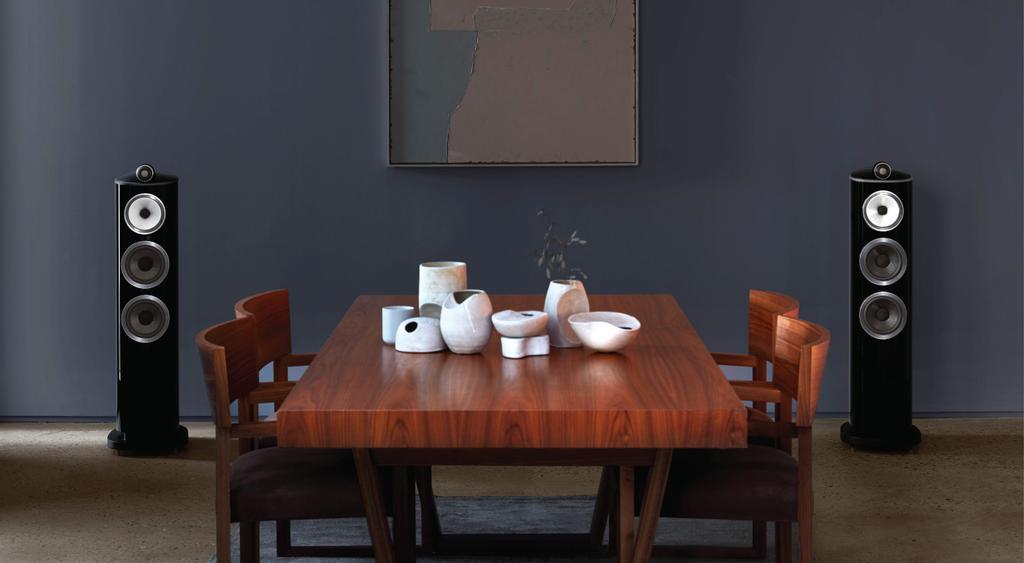
“The B&W 804 D4s delivered Williams’ voice perfectly, with incredible accuracy, not trying to make it sweeter, or purer, but delivering exactly the ‘feel’ Williams intended
But if that same driver is also asked to produce another musical note, let us say middle-C, which has a frequency of 261.63Hz, it would have to move backwards and forwards 261.63 times per second at the same time that it is also moving backwards and forwards 55 times per second. This means the frequency of what should be ‘middle-C’ will actually not always be precisely 261.63Hz but will instead be shifted higher or lower depending on the direction the cone is moving as a result of having to produce the 55Hz signal at the same time.
It is precisely because of phase modulation distortion that it is preferable that a low frequency driver (or drivers) be used to produce low frequencies and for a completely separate loudspeaker to be used to produce midrange frequencies, as is the case with the B&W 804 D4. For an in-depth explanation of this problem, Australian researcher and designer Rod Elliott has posted an article titled ‘Doppler distortion in loudspeakers — Real or Imaginary?’ at sound-au.com/doppler.htm
Because of the importance of the midrange to sound quality, it was this aspect of the B&W 804 D4’s sonic performance that we decided to investigate first, with the aid of the utterly distinctive voice of Lucinda Williams, and kicking off with the very first track from last year’s wonderful ‘Good Souls Better Angels’, which is You Can’t Rule Me. If you’re thinking you might be hearing the Lucinda of old, this track will change your thinking straight away. For a start, her voice is rougher, grouchier and slurrier than we’ve ever heard. It’s recorded dry, too, with only a touch of reverb added.
The B&W 804 D4s delivered Williams’ voice perfectly, with incredible accuracy, not trying to make it sweeter, or purer, but delivering exactly the ‘feel’ Williams intended. The wonderfully bluesy Bad News Blues that follows had the B&Ws working even harder, yet despite the background, we could still hear every syllable of the lyric perfectly, and also despite the speed at which Williams delivers them, this time less slurrily than on the opener. And it’s great the B&Ws deliver them so clearly, because there are some outstandingly good lines in Bad News and lots of bad news as well. You can understand why Rolling Stone declared her one of America’s greatest living songwriters.
On Man Without A Soul, Williams switches from blues to ballad to tell us exactly what she thinks of Donald Trump, and it’s not pretty. The suddenly expanded soundscape shows that the B&W 804 D4s are adept in their ability to do a disappearing act and leave you listening only to the music. The sense of us being enveloped in a room-sized acoustic space was uncanny. The screaming guitar breaks on this (and all the other tracks) are the inventive creations of ex-Wallflower Stuart Mathis (who also chimes in with some lovely acoustic work as well).
Wakin’ Up demonstrated to us the enormous bass capabilities of the B&W 804 D4, where bassist David Sutton leads off with a fabulous riff underpinned by a syncopated fill from drummer Butch Norton. Their years on the road together as Buick 6 (and backing Williams) means they’re tight… very tight. Williams surprises on this track as well, which would be the perfect soundtrack for an acid trip gone wrong. Lyrics such as this one: “He threw a punch/Somehow I missed it…/He pulled my hair/ And then he piss on me/ Next thing I swear he wants to kiss on me” might give you a taste. Then there’s the chorus, from which the track takes its title “I’m wakin’ up/ From a bad dream/ It shook me up/ It was a bad scene/ It fucked me up.” The clarity of the background vocals against the chaos of the instrumentation in the close-out was superb. We find that lesser speakers just don’t deliver in these situations.
Close your eyes before the next track Pray The Devil starts when listening to the B&W 804 D4s and you will experience what a reviewer means when she (or he) says “it seemed as though the performers were there in the room, right in front of me.”
Piano is not only a great revealer of a loudspeaker’s midrange performance, but also its performance right across the audio spectrum, because the five nines of musical performance are crowded between the low ‘A’ on a piano keyboard (27.5Hz) and the fabled ‘high C’ (4,186.01Hz). And what better way to listen to piano than to listen to Taylor Swift’s quarantine masterpiece ‘Folklore’?
And when we say masterpiece, we mean it. This is not the Taylor Swift we used to know and love, it’s a whole new Taylor Swift to fall in love with all over again, and there’s not a pop song in sight. The lyric to Last Great American Dynasty could almost have been written by Joni Mitchell (“There goes the loudest woman this town has ever seen/I had a marvellous time ruining everything”), while Exile, co-written by Bon Ivor, is a beautiful statement.
Also masterful is the way B&Ws deliver the intro of the solo piano and Justin Vernon’s rich baritone to this song. Swift is a really clever writer/composer, which on this album is no better illustrated by the way she tells the story of the same love triangle from three different perspectives on three different tracks (August, Betty and Cardigan).
How much of the four songs on this album that were written by Swift and Antonoff Jack Michael or those co-written with Aaron Brooking Dessner was Swift’s work is something only they will ever know but by way of example one of them (This Is Me Trying) is a story about what Taylor was thinking when she hid away in the country in Tennessee back in 2015 to escape media criticism, so it’s likely all Swift’s.
Pipe organ is great for sorting out deep bass, and you’ll hear a great pipe organ sound on Christopher Herrick’s ‘Organ Fireworks VII’ which sees him not on one of his familiar instruments in the UK, but on the organ housed in Reykjavik’s best-known landmark, the Hallgrimskirkja Church. Installed only in 1992 by German organ builder Johannes Klais of Bonn, it has 102 ranks, 72 stops and 5,275 pipes, most of which are employed by Herrick on this album.
Don’t expect to hear any old war-horses on this album either: only three of the composers will likely be known to you, and then only if you’re a dedicated follower of classical music. The highlighted work on the album is Julius Reubke’s Sonata On The 94th Psalm and the sound delivered by the B&W 804 D4s will allow you to fully appreciate why it’s considered one of the pinnacles of the Romantic repertoire. The B&Ws delivered the pedal notes with authentic authority and were equally revealing of the various stop changes over the three movements. The sound during the wild fugue that finishes the work is nothing short of amazing.
As for testing out that strange-looking totally unique Nautilus tweeter’s ability with the highest of highs, it was time to spin up Beach Bunnys’ ‘Honeymoon’, with its sizzling cymbals, high-hats and slightly distorted keyboards, along with guitars played at the top of the fretboard. All were delivered smoothly and cleanly by the D4s.
CONCLUSION
Every time B&W updates one of its series with a totally new driver, or even with improvements to one or more of its existing drivers, we always worry that B&W’s ‘Signature Sound’ — which is the reason B&W loudspeakers are the first choice of professional studios such as London’s Abbey Road — might be diluted.
The arrival of the 804 D4 proves that we need not have worried. That ‘Signature Sound’ is still there, and that sound has most definitely been improved, most notably by virtue of a smoother, more realistic midrange delivery and by high frequencies that sparkle ever brighter and are delivered with even greater purity than previously.
The 804 D4 is yet another tour de force from Bowers and Wilkins.

SPECIFICATIONS
B&W 804 D4
System Type: Four driver, three-way vented-cabinet
Frequency Response: 24Hz to 28kHz±3dB
Sensitivity: 89dBSPL (2.83V @ 1M)
Harmonic Distortion (2nd/3rd): <1.0% (90Hz–20kHz)
Harmonic Distortion (2nd/3rd): <0.3% (120Hz–20kHz)
Impedance: 8Ω (minimum 3.0Ω)
Dimensions (HWD): 1070×306×391mm
Weight: 36.9kg
Finishes (Cabinet): Gloss Black, White, Satin Rosenut, Satin Walnut
Finishes (Grille): Black, Grey
Warranty: Five Years
Contact: Sound United
(02) 9196 8990
Unboxing Bowers Wilkins 804 D4
Die brandneuen Standlautsprecher 804 D4 der legendären Bowers & Wilkins 800er Serie. Mehr Infos: ...






